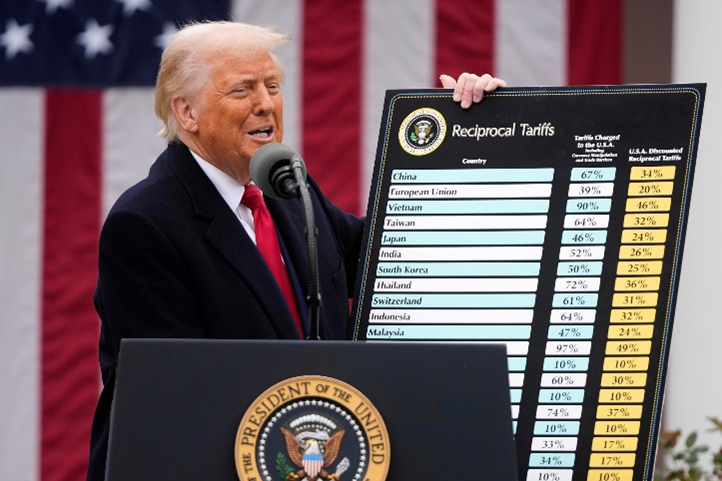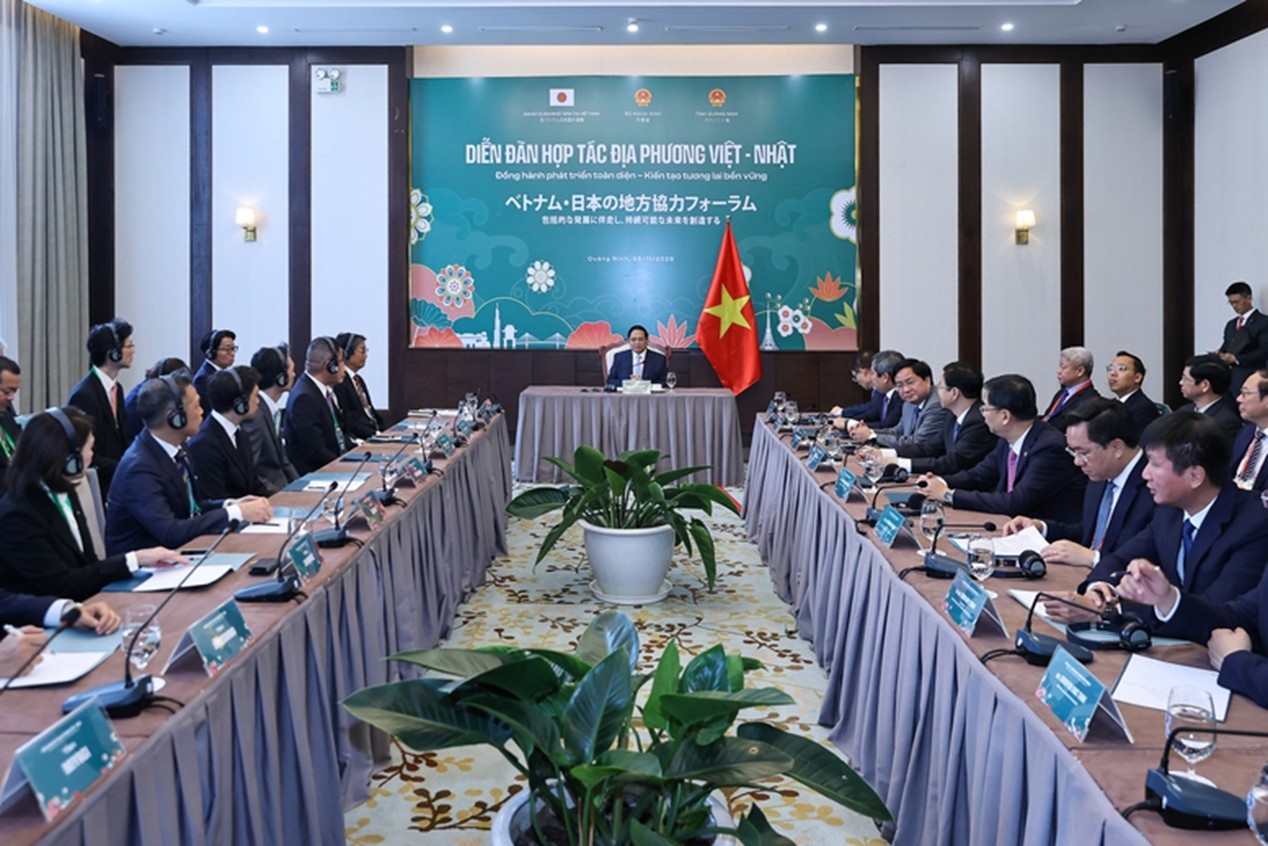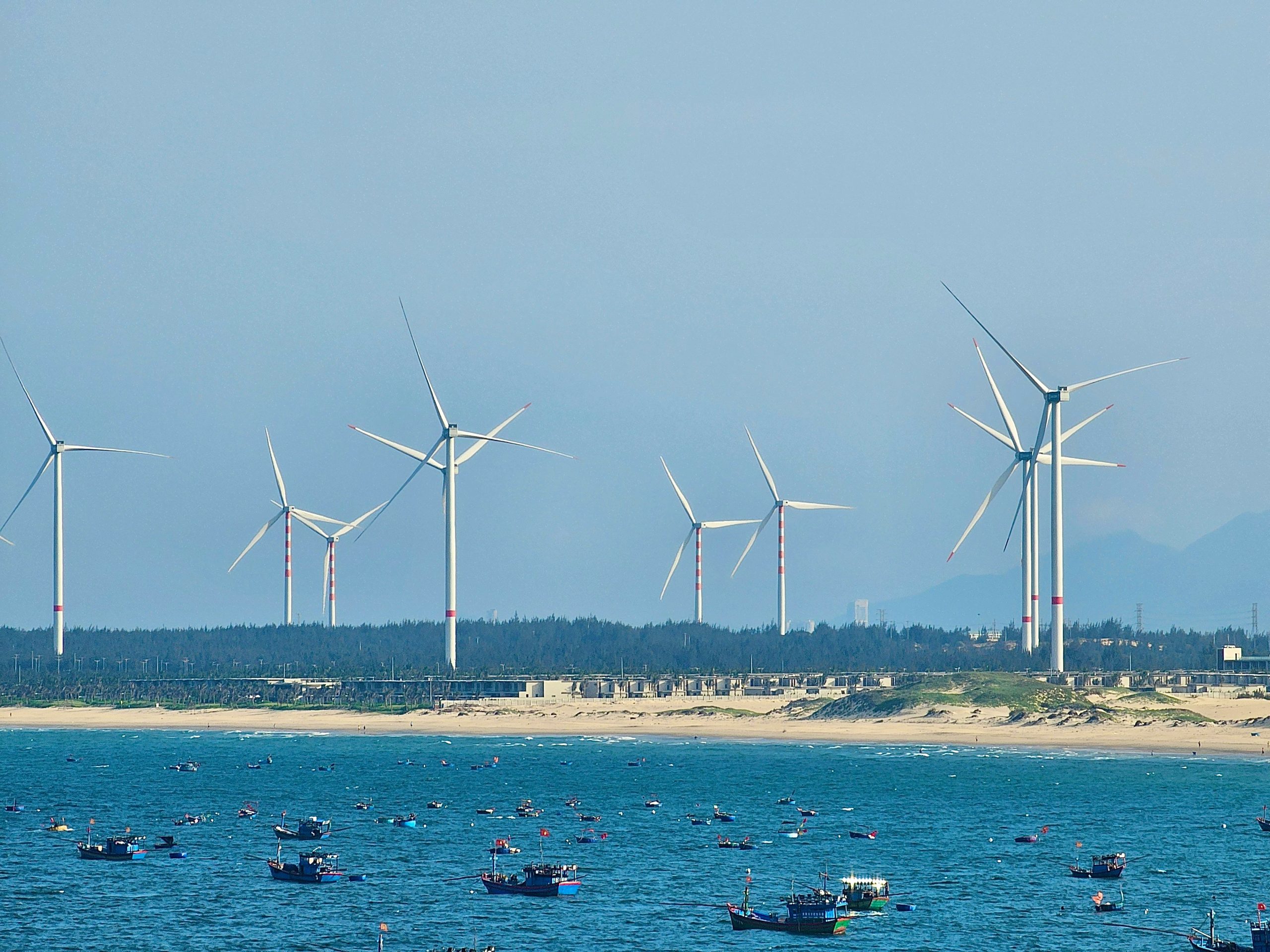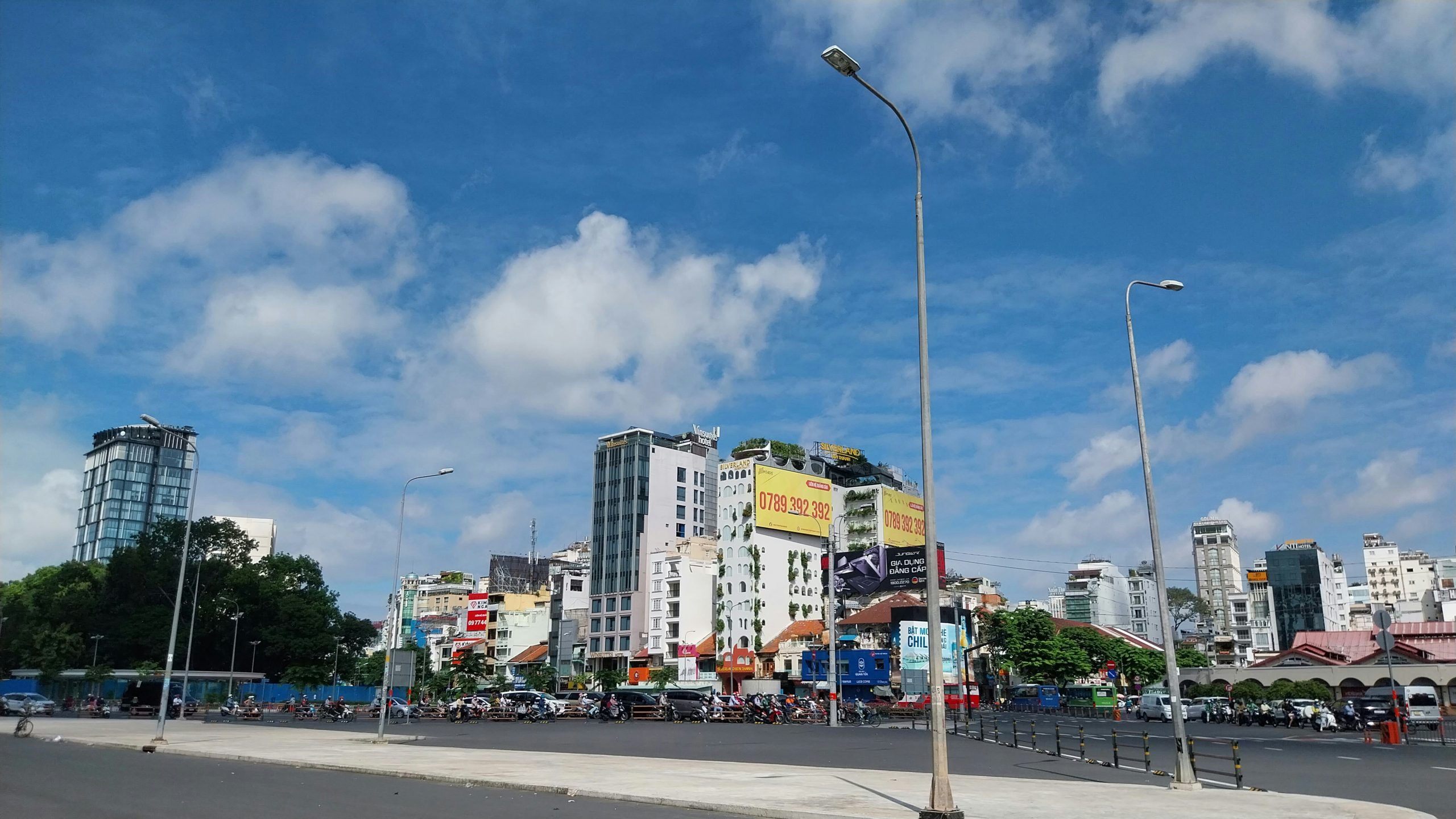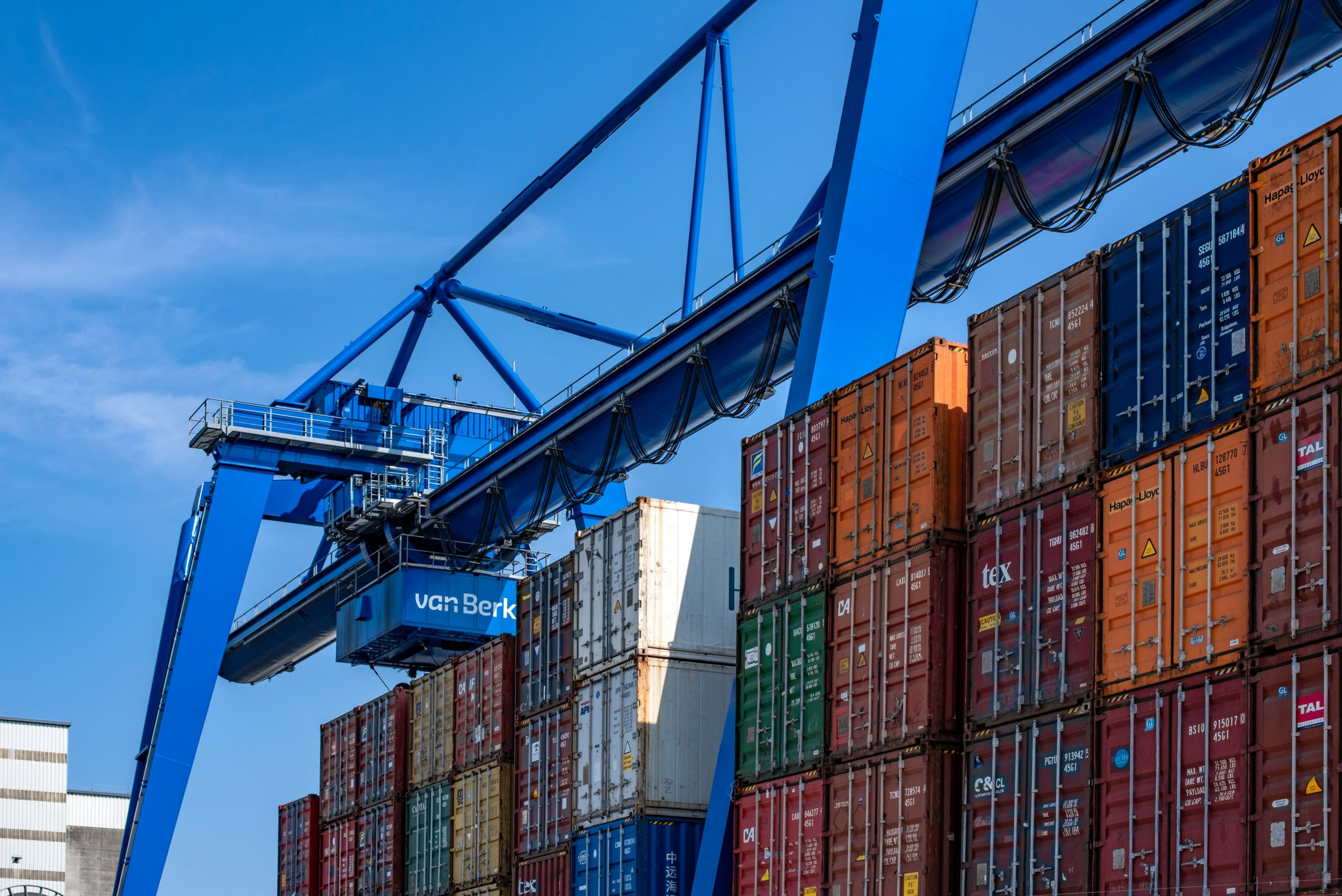
184월2025
최신 뉴스 및 보고서 / 베트남 브리핑
댓글: 댓글 없음.
미국은 베트남의 가장 크고 장기적인 수출 시장 중 하나이며, 2023년부터 포괄적인 전략적 파트너이기도 합니다. 그러나 최근 미국이 베트남 수입품에 46% 관세를 부과하기로 결정하면서 정부와 기업 모두에 충격을 받았으며, 잠재적인 경제적 영향에 대한 논의가 촉발되었습니다. 이번 관세 인상은 무역 불균형에 대한 우려를 해소하기 위한 것이지만, 장기적인 영향은 양국 모두에게 광범위한 영향을 미칠 수 있습니다.
미국 세금 정책 변경 및 상호 관세
2025년 4월 2일, 도널드 트럼프 미국 대통령은 2025년 4월 5일부터 발효되는 전 세계 국가 및 영토의 모든 수입품에 대한 10%의 기준 관세를 발표했습니다. 얼마 지나지 않아 미국은 베트남을 포함하여 미국과 상당한 무역 흑자를 기록하고 있는 국가들을 대상으로 상호 관세라고 불리는 더 높은 관세를 발표했습니다.4]. 베트남에서 미국으로 수입되는 90% 상품에 46% 관세가 부과되었습니다. 이 관세는 중국과 캄보디아에 부과되는 관세와 더불어 가장 높은 관세 중 하나로, 미국의 무역 적자와 관세를 피하기 위해 중국 상품이 베트남을 경유하여 수입되는 것에 대한 우려를 해소하기 위해 부과되었습니다.
특정 상품은 미국 상계 관세 조정에서 제외됩니다. 여기에는 다른 규정(50 USC 1702)에 따라 이미 과세된 품목, 별도 조항에 따라 과세되는 철강, 알루미늄, 자동차 및 자동차 부품, 구리, 의약품, 반도체 및 목재, 향후 관세 부과 가능성이 있는 모든 상품, 금괴, 에너지, 그리고 미국에서 구할 수 없는 특정 광물이 포함됩니다.
상계관세 정책 발표 이후 미국은 지속적으로 적용 시기와 범위를 조정해 왔습니다. 4월 9일, 워싱턴은 중국을 제외한 상호 관세 부과를 90일 연기했습니다. 비보복적 무역 상대국을 위한 [3]. 상호 관세 정책은 4월 9일 발효되는 대신 7월 8일로 연기되었습니다. 이 기간 동안 베트남 상품뿐만 아니라 비보복 국가, 기준 관세인 10%만 적용됩니다. 이러한 지연은 베트남을 포함한 많은 국가들이 대화를 추진하고 양자 무역 정책을 조정할 수 있는 중요한 협상 창구로 여겨집니다.
트럼프 대통령은 상호 관세를 발표했습니다.
원천: ABC 뉴스
베트남-미국 무역 활동
베트남은 지난 5년간 지속적으로 미국과 상당한 무역흑자를 유지해 왔으며, 흑자액은 2020년 약 $634억에서 2024년 약 $1060억으로 64% 증가했습니다.1]. 2024년 양국 간 총 무역액은 1조 4천억 원(TP4T1,320억)에 달했으며, 이 중 베트남의 대미 수출액은 약 1조 4천억 원(TP4T1,190억)으로 추산됩니다. 2024년 베트남의 대미 수출 상위 3대 품목은 컴퓨터, 전자 제품 및 부품(전체 수출액의 19.4%), 기계, 장비, 공구 및 예비 부품(18.5%), 섬유 및 의류(13.5%)였습니다. [1]. 이 세 가지 범주는 베트남의 대미 수출 총액 중 51.4%를 차지하며, 이는 양국 간 무역 관계에서 이들이 차지하는 중요한 역할을 강조합니다.
베트남의 미국으로부터의 수입 가치는 수출 가치에 비해 상당히 낮은 수준을 유지했으며, 약 1조 4천억 달러에 달했습니다.6]. 이 수치는 2020년과 거의 변동이 없었으며, 수입액은 $130억에서 $153억 사이를 꾸준히 유지했습니다. 이러한 불균형은 베트남에 상당한 무역 적자를 초래했습니다. 미국으로부터의 주요 수입 품목은 컴퓨터, 전자 제품, 예비 부품 및 구성품(28.7%), 기타 제품(10.5%), 기계, 장비, 공구 및 악기(7.3%), 그리고 동물 사료 및 동물 사료 재료(6.7%)였습니다.7].
이는 양국 간 상당한 무역 불균형을 보여줍니다. 베트남은 미국에 수입보다 훨씬 많은 상품을 수출하여 베트남의 무역 흑자를 초래합니다. 많은 전문가들은 이러한 불균형이 트럼프 대통령이 최근 발표한 상호 관세의 핵심 요인이라고 생각합니다.8].
Vietnam-US trading value record 2020-2024
단위: 10억 달러
베트남에 대한 영향 평가
미국의 수입 규제 강화와 보호무역주의 강화 추세는 국내 제조업 회복 전략의 일환이므로 되돌릴 수 없습니다. 수출 지향적 경제인 베트남에게 이러한 압력은 불가피합니다.
이 정책으로 인해 가장 직접적인 부정적 영향을 받을 것으로 예상되는 산업으로는 섬유 및 신발, 가구 및 인테리어 제품, 해산물, 전자 제품, 구성품 등이 있습니다.9]. 이러한 부문들은 베트남의 대미 수출에서 상당한 비중을 차지하며, 많은 기업들이 미국 시장에 크게 의존하고 있습니다. 그중에서도 섬유 및 신발은 미국이 현재 이 분야 기업들의 최대 수출 시장이기 때문에 가장 민감한 분야로 간주됩니다. 가구 및 인테리어 제품 부문 또한 미국 시장에 베트남산 목재 제품이 널리 유통되고 있어 취약합니다. 마찬가지로, 높은 수출량으로 유명한 전자 및 부품 산업은 관세 인상으로 생산 비용이 증가할 경우 공급망 차질 및 주문 감소 위험에 직면할 수 있습니다.
또한, 이러한 정보는 베트남에 대한 외국인 투자자, 특히 미국 시장을 대상으로 제품을 생산하는 다국적 기업의 투자 심리에 상당한 영향을 미쳤습니다. "베트남산" 제품의 비용을 급격히 증가시키는 관세 인상은 가격 경쟁력을 약화시켜 기업들이 관세가 낮거나 없는 역내 다른 국가로 생산 라인을 유지, 축소 또는 이전하는 것을 재고하게 만들었습니다. 비교 상호 관세율을 기반으로 볼 때, 싱가포르(10%), 필리핀(17%), 말레이시아(24%), 인도네시아(32%), 태국(36%)과 같이 비용 최적화를 추구하는 외국인 투자자에게 여러 역내 국가가 매력적인 대안이 될 수 있습니다.13]. 결과적으로, FDI 유입으로 수혜를 입었던 산업용 부동산 시장, 산업단지 인프라, 물류 부문 역시 입주율 감소, 생산 공간, 창고, 물류 서비스 수요 감소를 통해 간접적인 영향을 받을 수 있습니다.
그러나 이 정책은 국내 생산에도 긍정적인 영향을 미칩니다. 베트남은 이 시기를 활용하여 특화된 제조업을 발전시킬 수 있습니다. 중국은 현재 미국으로부터 가장 높은 관세를 부과받고 있는 국가이지만, 지리적 근접성과 베트남과의 우호적인 외교 관계 덕분에 미국 수출 시 보복 관세를 피하고자 하는 공장들에게는 전략적으로 중요한 목적지로 여겨집니다. 트럼프 행정부는 상품의 원산지 판정을 매우 중요하게 여기며, 제품이 수출국 상품으로 인정되는지 여부를 평가하기 위해 "실질적 변형" 원칙을 적용합니다.10]. 베트남의 제조 공정이 단순 가공 또는 조립에 국한되고 제품의 구조나 기능에 상당한 변화가 없는 경우, 미국은 여전히 해당 제품을 중국 제품으로 간주하여 높은 보복 관세를 부과할 수 있습니다. 그러나 베트남의 생산 공정이 충분히 심층적이어서 구조나 기능에 명백한 변형이 발생하는 경우, 해당 제품은 베트남 제품으로 인정되어 더 낮은 세율을 적용받을 수 있습니다.
이는 과거 베트남이 전문 제조업보다는 가공 및 조립 산업으로 주로 알려져 있었기 때문에 베트남에 특히 유리합니다. 중국 기업의 기술과 선진 생산 공정 이전은 베트남이 전자, 기계, 섬유 등 고부가가치 산업을 발전시키는 데 도움이 됩니다. 단기적으로는 적응에 시간이 걸리기 때문에 이러한 이전이 수출 제품에 큰 변화를 가져오지 않을 수 있지만, 장기적으로는 베트남의 노동력 향상, 제품 품질 향상, 생산성 향상을 위한 탄탄한 기반을 제공하여 더욱 지속 가능한 국내 제조업 발전에 기여할 것입니다.
베트남 정부의 초기 대응 조치 및 기업에 미치는 영향
베트남 정부는 미국의 관세 조치에 신속하게 대응했습니다. 외교적 측면에서는 토람 공산당 서기장이 도널드 트럼프 미국 대통령과 전화 통화를 통해 보다 공정한 양자 간 조세 메커니즘을 제안했습니다.11]. 동시에 총리는 미국의 경제 및 무역 정책 조정에 선제적으로 대응하기 위해 영향을 면밀히 모니터링하고 평가하며 적절한 전략을 권고하기 위한 특별 태스크포스를 구성했습니다. 협상 대표단은 특사 자격으로 미국을 방문했습니다. 당 총서기 람 토 서기장이 양자 경제 및 무역 문제를 논의할 예정 [12]. 호 득 폭 부총리는 이번 방문 중 제이미슨 그리어 미국 무역대표부(USTR) 대표와 회동했습니다. 미국이 상호 무역 협정 협상을 개시하기로 합의하면서 대표단은 첫 번째 긍정적인 성과를 거두었습니다. 이 협정에는 관세 조항이 포함되며, 양측 기술팀 간의 즉각적인 교류가 제안될 것입니다. 국내적으로는 베트남 정부가 협회 및 수출 기업들과 회의를 소집하여 무역 균형을 이루고 기업들의 시장 지위 유지를 지원하기 위해 특정 미국산 제품에 대한 수입 관세 인하 가능성을 모색했습니다. 관세 유예 및 협상 기간 동안 베트남의 적극적인 대응은 필수적인 것으로 평가됩니다.
기업의 경우, 국내 수출업체는 미국의 상반된 관세 부과 압력에 대응하기 위한 적응 조치를 신속하게 시행해야 합니다. 최우선 과제는 시장 다각화입니다. 많은 섬유, 가구, 수산물 기업들이 전체 수출액에서 상당한 비중을 차지하는 미국 시장에 대한 의존도를 줄이기 위해 중동, 유럽, 일본 등의 지역에서 새로운 고객을 적극적으로 모색하고 있습니다. 동시에, 기업들은 투입 자재를 엄격하게 관리하고, 제품 품질을 개선하며, 특히 원산지 투명성을 확보하여 미국의 점점 더 엄격해지는 추적 요건을 충족함으로써 생산 최적화를 강화해야 합니다. 미국의 고율 관세 부과는 베트남산으로 위장한 중국산 제품의 미국 수출을 억제하기 위한 것일 뿐만 아니라, 베트남산 제품의 명확한 추적 가능성을 더욱 중요하게 만들고 있습니다.
중국 기업이 베트남으로 생산 시설을 이전할 수 있는 능력은 베트남 국내 제조업 경제에 도움이 되겠지만, 제품 원산지 결정과 관련하여 여전히 몇 가지 위험이 존재합니다. 미국은 제품이 베트남 제품인지 여부를 평가하기 위해 "실질적 변형" 원칙을 적용합니다. 베트남의 제조 공정이 상당한 변화를 일으키지 않으면 해당 제품은 중국 제품으로 간주되어 높은 보복 관세가 부과될 수 있습니다. 중국은 원자재부터 완제품까지 베트남의 대미 수출 호황에 분명히 중요한 역할을 해왔습니다.2]. 그러나 중국이 핵심이 아닙니다. 따라서 정부 차원에서 베트남은 베트남 투자를 희망하는 중국 기업뿐만 아니라 다른 국가 기업들의 기술 이전을 적극적으로 장려하여 베트남 내 생산 기반을 강화해야 합니다. 사업적 관점에서는 기업들이 미국의 제품 평가 원칙을 준수할 수 있도록 원자재 공급원을 다각화해야 합니다. 베트남은 이러한 상황을 활용하여 투자 자본을 확대하여 가치 사슬을 상향 이동시키고, 해외 투입재에 대한 의존도를 점진적으로 낮출 수 있습니다.
결론
결론적으로, 최근 베트남 수입품에 대한 미국의 관세 인상은 오랜 파트너십에도 불구하고 양국 무역 관계에 심각한 어려움을 초래하고 있음을 보여줍니다. 베트남은 여전히 중요한 수출 지향적 경제이지만, 이러한 관세는 섬유, 가구, 전자제품과 같은 핵심 산업에 압력을 가할 것으로 예상되며, 신속한 적응과 다각화 노력을 요구합니다. 동시에, 이러한 조치는 미국이 국내 제조업과 무역 보호주의로 전략적 전환을 강화하는 것이며, 이는 세계 무역에 더 광범위한 영향을 미칩니다. 베트남의 적극적인 정부 조치와 기업의 회복탄력성은 이러한 전환기에 매우 중요할 것입니다. 그 결과는 무역 불균형을 공정하게 해소하기 위한 양자 협상과 협력 노력에 크게 좌우될 것입니다.
[1] Phap Luat Doanh Nhan 뉴스. 2024년 베트남산 제품 대미 수출액은 약 1,200억 달러, 전자제품과 섬유제품이 큰 비중 차지.
[2] 로위연구소. 베트남에서 만든 건가요, 아니면 중국 뒷문으로 수출한 건가요?
[3] NBC 뉴스. 트럼프 관세: 대통령, 90일간 휴교 발표 - 알아야 할 사항.
[4] 로이터. 미국이 트럼프의 10% 관세를 징수하기 시작하면서 세계 무역 규범이 무너졌습니다.
[5] 베트남 플러스. 미국, 베트남산 일부 수입품에 46% 관세 부과.
[6] SGGP. 최근 몇 년간 베트남과 미국 간의 무역.
[7] 베트남 브리핑. 미국의 관세 목록과 베트남에 미치는 영향에 대해 알아보세요.
[8] Vn경제. 미국은 베트남에 대한 46% 관세를 어떻게 계산합니까?
[9] 탄트라(Thanh Tra). 미국이 베트남 상품에 46% 상계 관세를 부과하면, 어떤 분야가 가장 큰 영향을 받을까요?
[10] 미국 상무부. 원산지 규칙 및 실질적 변형.
[11] Vn익스프레스. 토 램 사무총장이 트럼프 대통령과 전화 통화를 했습니다.
[12] VOV. 베트남, 미국은 무역 협정 협상을 시작하기로 합의했다.
[13] VTV 온라인, ASEAN, 미국 세금 정책에 대한 특별 회의 소집.
* 본 기사의 내용을 인용하고자 하시는 경우, 저작권을 존중하여 출처와 원 기사의 링크를 함께 명시해 주시기 바랍니다.
| 비앤컴퍼니
2008년부터 베트남에서 시장 조사를 전문으로 하는 최초의 일본 기업입니다. 업계 보고서, 업계 인터뷰, 소비자 설문 조사, 비즈니스 매칭을 포함한 광범위한 서비스를 제공합니다. 또한, 최근 베트남에서 900,000개 이상의 기업에 대한 데이터베이스를 개발하여 파트너를 검색하고 시장을 분석하는 데 사용할 수 있습니다. 문의사항이 있으시면 언제든지 문의해주세요. info@b-company.jp + (84) 28 3910 3913 |
